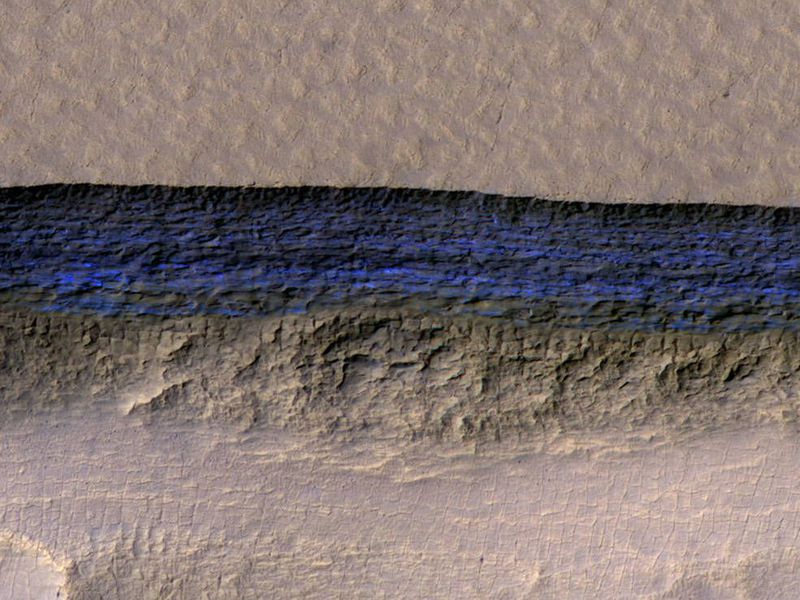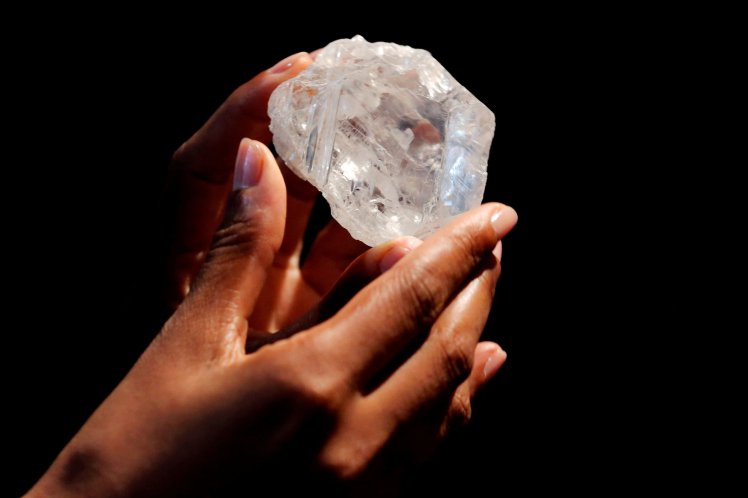
Sizable deposits of water ice lurk just beneath the surface in some regions of Mars, a new study reports.
Researchers have known for some time that vast ice sheets lie deep beneath the rusty surface of Mars. But details about the thickness of the ice, its composition and its layering have been difficult to gauge—until now. As Mike Wall reports for Space.com, NASA’s Mars Reconnaissance Orbiter (MRO) has discovered eight sites where erosion has exposed enormous deposits of ice, some of which are 330 feet thick.
The findings, described recently in the journal Science, were made with the MRO’s High Resolution Imaging Science Experiment (HiRISE) camera, which has been taking images of Mars since 2005. The sites of exposed ice are located on steep slopes, or “scarps,” in Mars’ midlatitudes. The ice seems to be relatively pure and some of the deposits are only about a meter below the surface, writes Robbie Gonzalez of Wired.
Researchers are intrigued by these discoveries for a number of reasons. For one, the deposits of ice could shed light on Mars’ climate history. The authors of the study theorize that the layers of ice began as snow, which compacted and hardened into ice sheets. Mars’ obliquity—or the tilt of its axis—has varied considerably over millions of years, shifting between 15 and 35 degrees over the course of millennia. And when the tilt is higher, ice is more likely to form at the planet’s midlatitudes.
“There’ve been suggestions that, when there’s high obliquity, the poles get heated a lot—they’re tilted over and pointed more at the sun, and so that redistributes ice toward the midlatitudes,” Colin Dundas, of the U.S. Geological Survey’s Astrogeology Science Center in Arizona told Wall of Space.com. “So, what we may be seeing is evidence of that having happened in the past.”
What’s more, the relatively shallow deposits of ice may mean that frozen water is more accessible to future human exploration missions than scientists had previously realized. “Astronauts could essentially just go there with a bucket and a shovel and get all the water they need,” Shane Byrne, and associate professor at the University of Arizona Lunar and Planetary Laboratory and a co-author of the new report, said in a NASA press release.
There is at least one caveat, however, as Gonzalez points out in Wired. The eight sites of exposed ice sheets exist at latitudes between 55 and 60 degrees north or south of the equator, where temperatures can get very cold. Any manned mission to Mars would likely restrict its movement to within 30 degrees of the equator. But as Dundas said in an interview with Gonzalez, “I’m sure we haven’t found all of the exposures at this point.”
Plans are in motion to investigate further. Both NASA and the European Space Agency are due to send rovers to Mars in 2020, which are equipped with radar and drill technologies that can explore beneath the surface of the Red Planet.













